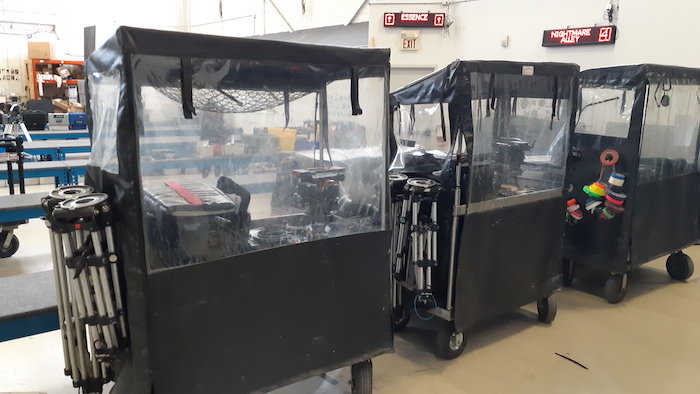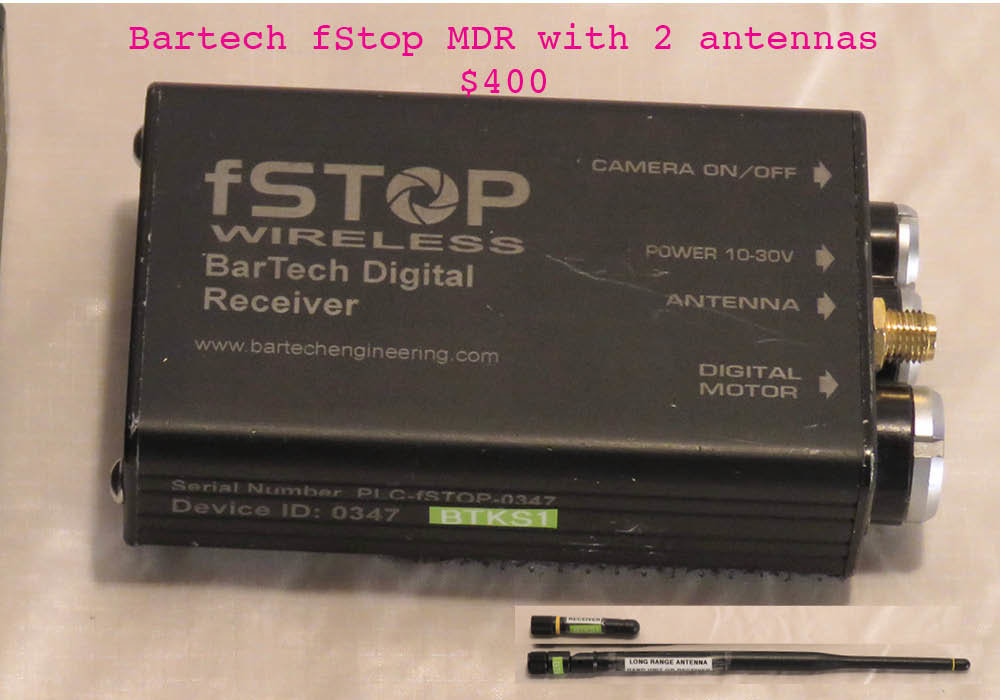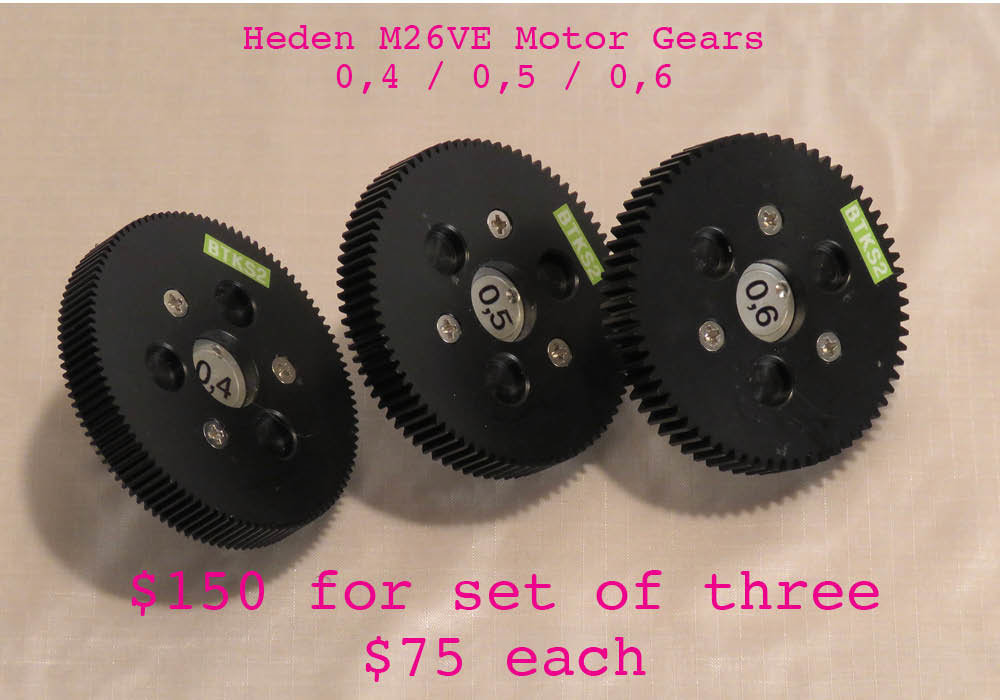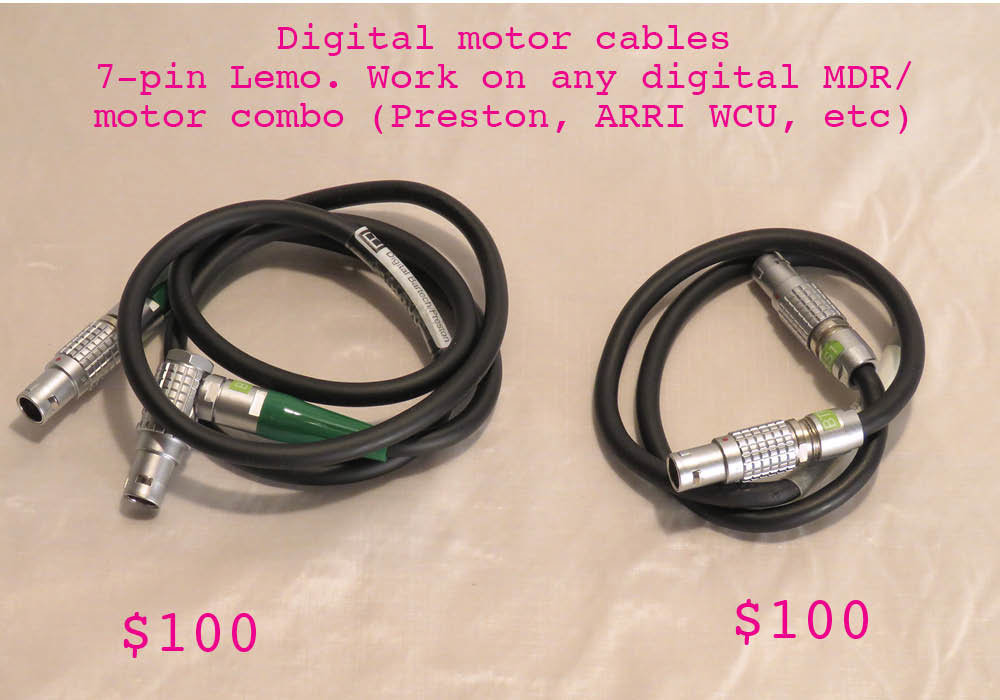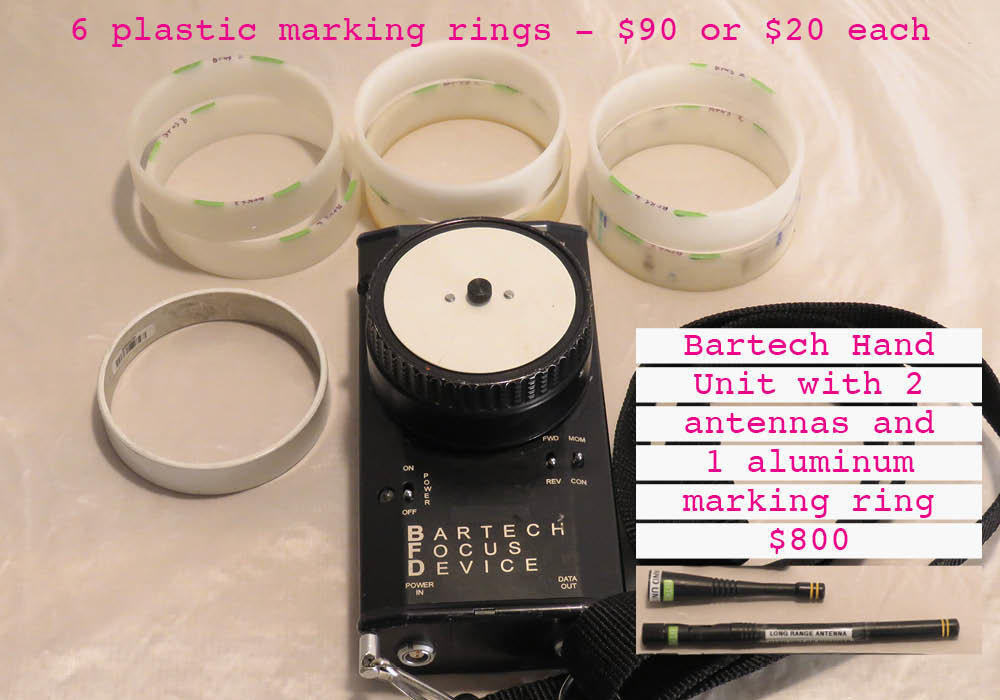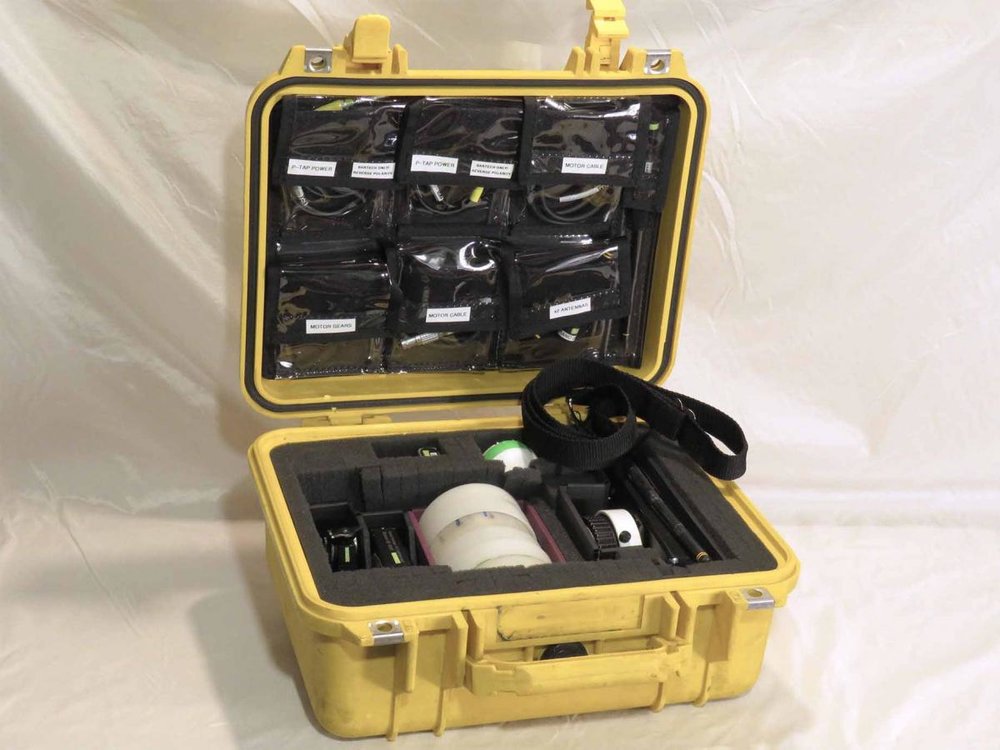
Kyryll Sobolev
Basic Member-
Posts
177 -
Joined
-
Last visited
Everything posted by Kyryll Sobolev
-
the tools which you will need largely depend on the scope of the job and level of trust you have with your colleagues. assuming this is a digital shoot, if you know that tomorrow's gig (or today's "need you here ASAP" replacement) is contained to a studio space with no exteriors/water/etc., then, you can probably squeeze by with the following. for 2nd AC, and assuming your 1st AC is a good colleague and trusts you: - slate pen, or any other marker and your dumb slate - puffer - kimwipes - multitool - roll of cloth tape these are usually the contents of your toolbelt as a 2nd AC (i have left out a flashlight...you CAN get through the day without it) for 1st AC, and assuming the DP trusts you: - if there is no 2nd AC on the shoot, then all of the above plus - tape measurer+disto, and definitely the flashlight (these 2 usually live in every 1st AC's belt) but at some point in the day you will need other tools. since you have accepted the job, you have to make yourself and your boss look good. when i was a 2nd AC, if i accepted a daily call or a commercial/music video, i would always bring my: - ditty bag, which had most of the tools we generally use - weather bag (everything to protect camera) - my personal bag of clothes depending on the shoot (ready for rain or winter, etc) as a 1st AC i continue this practice. for short format work i bring those 3 bags. for long format work, like features or tv series, you will need carts to organize tools and accessories. these are doug lavender and team carts. he normally works in vancouver, so they have these amazing rain covers made for the carts, which we normally don't have a need for in toronto. but i saw these in prep and though they were very cool.
-
this 'focus distance' part of the article was maddeningly confusing to me as well, so i had to ask a lens technician to explain. I will try to paraphrase his words below, and perhaps Dom can explain a bit further if this is still confusing. The explanation and the theory of the entrance an exit pupils in the article are correct. Entrance pupil is an image of the aperture stop in front of the lens. The size of that image and position controls the amount of lite going through the optical system (lens). Lenses have nodal points, which are important here because nodal planes or conjugate planes can be inside or outside of the lens depending on the design. Therefore they may or may not be aligned with the position of the entrance or exit pupil. In theory, the distance to the subject is measured from first nodal plane and not from the film plane. But, it is not practical for the end user to measure from nodal point. You can't put a tape hook on the lens, some lenses have nodal point outside the lens body, zooms have different nodal point because of the different focal lengths, etc. Therefore, as Dom has explained, the lens footage scale is calibrated as a final distance between an object and its image on the film or sensor, because this is what is important for end user - final, sharply focused, image of an object at given distance. Measuring from object to the nodal point is for design and calculation purposes of the optical system. For example, when a designed and manufactured lens is set on MTF or large collimator, it is focused at a given distance that is measured from a FILM PLANE, not from nodal point. The best image obtained on that film plane is engraved as the distance on lens. This measurement avoids the size of the lens and its internal optical movements. in essence, the article author is flexing lens design knowledge on the readers ? but we do learn something out of it!
- 17 replies
-
- 1
-

-
- focus
- entrance pupil
-
(and 2 more)
Tagged with:
-
WTB - 2 x Bracket Heden HEM02 with 15mm inserts
Kyryll Sobolev replied to Kevin Gourvellec's topic in Cine Marketplace
plc electronics or abelcine.com should have these -
how to learn to be a focus puller?
Kyryll Sobolev replied to Abdul Rahman Jamous's topic in Camera Assistant / DIT & Gear
last two statements are not true. the relative ease of a job varies with each project, but in no way does it get easier for a 1st AC (especially A cam) as the budget increases. also, no, you can't learn focus pulling by eye on a stills lens on a 3-inch screen. how does that even make sense -
Bartech Digital bits and pieces
Kyryll Sobolev replied to Kyryll Sobolev's topic in Cine Marketplace
-
i'm selling bits and pieces of my digital bartech kits maybe someone could use these for their backups will sell items individually. prices in USD. shipping from toronto, canada. 1. Bartech P-tap power cables (4 cables available, $75 each) 2. Digital motors cables (4 cables available, $100 each) 3. Bartech Hand unit with 1 aluminum marking ring and 2 antennas (2 units available, $800 each) 4. 6 plastic marking rings (12 rings available, $20 each) 5. Bartech fSTOP MDR with 2 antennas (2 units available, $400 each) 6. Heden M26VE motor gears, set of 3: 0,4 / 0,5 / 0,6 (2 sets available, $150 each set or $75 per gear) 7. x3 Re-chargeable 9V batteries with x1 charger (2 sets available, $30)
-
Union Job Classification
Kyryll Sobolev replied to Jinuk Lee's topic in Camera Assistant / DIT & Gear
check with your local in my local you can work utility and 2nd AC interchangeably, but you need to officially upgrade beyond that. -
use a clear garbage bag for the camera - they are bendable, cuttable, and very easily replaceable. you can still see and push camera buttons through them use small binder clips to attach the bag to the mattebox cover the on-boarx monitor with a clear ziploc bag, pull it tight, and wrap elastic bands around the base of the noga arm be creative - we use food wrap (saran wrap? cling wrap?) if needed, bongo ties, elastic bands, clips of all sorts
-
What does this mean in relation to a lens?
Kyryll Sobolev replied to Daniel D. Teoli Jr.'s topic in Lenses & Lens Accessories
focal length is the distance between rear nodal point to the point where light crosses the optical centre axis of the lens (which at infinity is the plane/film/sensor) -
i would not worry about a 1-2mm dip it happens quite frequently with strong motors preston dm1x can move a lens at either end point. it almost never happens on primes, but mostly on zooms optimos for example (28-76 or 45-120) have their focus ring furthest away from the mount, so a strong motor will push them you can turn down the torque, use your hands to keep the motor and lens steady on calibration, or add lens support bracket if possible
-
Movie/TV Show prep phase (What to do?)
Kyryll Sobolev replied to Ben Kahn's topic in General Discussion
jeremy benning explains in detail how he has prepped 'the expanse', at least from the lighting/set design side and this is an interesting podcast as well, where jeremy talks about shooting a tv series -
Alternative to Light Ranger 2
Kyryll Sobolev replied to Guillaume Cottin's topic in Camera Assistant / DIT & Gear
LR2 is in a league of its own -
Canon C300 mki (1920x1080) with accessories
Kyryll Sobolev replied to Kyryll Sobolev's topic in Cine Marketplace
lowered price: $2000 USD -
SOLD
-
I have two well-stocked Digital Bartech kits for sale Full description of items and better photos available here: Kit 1 https://drive.google.com/open?id=1owEPj7XZVyePTZ9E4warbng8wn4zKCUl $4500 USD Kit 2 https://drive.google.com/open?id=16kAQqs01NUKoFEcdCdaQTUKDuB2nOCF6 $4500 USD If you buy both kits at once, I will discount the price to $7500 USD Also, I have some accessory cables which you may find useful: https://drive.google.com/open?id=1z42envvzhL8wpijqqyzIXKen18Go_Bgd $100 USD Located in Toronto, Canada. Buyer pays shipping.
-
up for sale is my vintage Ronford Baker F15S fluid head 100mm bowl decent condition and actually still working great for its age all the photos can be viewed at this google drive link notes about the travel case: - the right-side latch is broken (you will see in the photo) - the bottom of the case has a small hole in it, from where the head used to rest (i now let it rest on the tie-down, which is not as sharp) - case size is 12"x13"x14" - case weight with head: 34lbs $400 USD, buyer pays shipping located in toronto, canada
-
for sale: Canon C300 mki (1920x1080) with a lot of accessories a lot of photos and item description here: https://drive.google.com/open?id=1Gh-fCP6aBY2U5W25R2TnUXIhmR4uUrKM $2500 USD buyer pays for shipping shipment from toronto, canada - google drive link has notes on the package size and weight
-
i have an old soviet document for OCT mount specs on the very last page are PL-mount specs https://drive.google.com/file/d/0B8UCfj_Milp_dGZfMFAxVHFTYXdiZk5ZeDAwSDN5TGtuSTBr/view?usp=sharing these are not official specs either, but soviet attempt at replicating it
-
page 2 INSTRUCTION for use and development of b&w reversal film stocks OCH-45, OCH-45 type L, OCH-180 spectral light sensitivity of this film is panchromatic you cannot use this film to get a negative keep in mind that for film stock with perforation type "S" you must use film cameras and projectors with Super-8 format keep in mind that because this is a reversal film stock, the dynamic latitude is significantly less than a negative film stock would have. because of this, correct exposure of the film becomes significantly more important light sensitivity of this film gradually decreases over time (up to 30% by the end of best before date). you must account for that in your exposure. to arrive at a correct T-stop use the following film-speed numbers: OCH-45 daylight 45, tungsten 32 OCH-180 daylight 180, tungsten 250 another table for adjusting exposure while using filters ZHS-12 (light-yellow), ZHS-18 (dark-yellow), OS-12 (orange), ZHZS-9 (green-yellow) after exposure you need to develop the film in the shortest time period possible table with steps of developing process/time in minutes/temperature washing of the film at each stage of development (so steps 2, 4, 6, 9, 11) has to be done in running water only flashing the film is done by a tungsten light, 100w, placed 1 metre away from the film RECIPE (to make the developing baths) bunch of chemicals
-
page 1 before gluing/stitching you must clean the film's emulsion and lacquer layers on the spot where you will be gluing/stiching STORAGE keep the film in cool dry place, away from source of heat, and protect the film form direct sunlight. keep in mind that the film will be negatively impacted if it comes into contact with active gases (ammoniac, acetylene, hydrogen sulfide, etc) GUARANTEE the high quality of this film is guaranteed until the expiry date printed on the package all products produced at this factory are thoroughly checked and pass quality control. if the consumer finds a defect in the film (prior to best before date) you need to do such such and such and contact blah blah. if the defect is confirmed to be due to manufacturing, you will receive replacement product for the same amount addresses of specialized labs that work with consumer film stock: various addresses follow shostkinskoe factory "svema" manufactures and develops b&w film stock in size 16mm and 2x8mm only with normal perforation ***side note: svema stands for SVEtochustvitel'nye MAterialy, or, light-sensistive materials. factory created in 1931 in Shostka, Ukraine*** film that is stitched or has damaged perforation will not be accepted for developing film must be sent for developing in the factory box (in which it was purchased... i assume)....some details and instructions for shipping the cost of film development - 7 kopeks per 1 metre some more instructions for payment and shipping
-
instead of the band performing live, you can have them perform to a recording then get a sync slate and connect it to your playback device, so the device which is playing the song is the master timecode. the idea is to show the timecode on the slate to the camera. in editing you will know exactly which part of the song is playing this link here describes it quite well https://www.bamfsound.com/how-to-music-video-playback-with-ltc-timecode/
-
i find these threads a bit mind-numbing, in the way of "this is a song that never ends, and it goes on and on my friend" there was an earlier thread about some films at a festival that had a lot of soft shots... the main thing to remember is that by the time the audience sees the shot on screen, it has already been watched and approved by many pairs of eyes. on big budget projects, an experienced focus puller will usually know what he missed before they even call "cut". in addition, on digital shoots there are many people watching the shot live on 24" or bigger screens. a DIT or a 2nd AC may watch the shot for "quality control", some 1st ACs even like feedback on the walkie during the shot. so vince is technically correct. if you boil it down to the basics, the issue is always either technical or human error. however, it is not up to the focus puller to decide what shot makes it to the cut. we, as technicians, pass on the information, and the adults decide what to do with it. also remember that the multi millions on big projects don't really go to camera department... other than it usually buys them much sharper lenses :) the budget doesn't make it easier to have a wide open master prime or a leica a soft lock-off wide shot... could be anything - maybe the lens didn't calibrate properly on the remote focus, maybe it was an un-tested daily lens, maybe this was a hastily thrown together 2nd unit shot. but you can be sure that this shot was seen, noted, and went up the ranks as soon as the dailies came in
-
Lomo Foton-A Follow Focus?
Kyryll Sobolev replied to David Hessel's topic in Lenses & Lens Accessories
i just received a foton 37-140 (without the anamorphic attachment), and it is also exceptionally difficult to move the focus ring. i had a suspicion that because of its age and lack of maintenance the grease inside has dried up. so i talked to oleks, and that is exactly the problem. grease in that lens over long periods of time becomes more like glue. so it is likely your lenses have not been serviced in a long time. and to properly re-grease this lens is quite a process. here is a photo oleks showed me of this lens taken apart. the brass ring is the threaded focus block - which you can take out from the front of the lens, and grease the threads. in this particular photo the threads are actually filed down (i don't know why). but then you have to disassemble from the back of the lens to access the focus ring, and grease its threads. anyway... periodic maintenance is what your lenses need -
we used the master anamorphics on a mini without lens support (our lens set went up to 135mm) the camera is obviously very front-heavy, so we had to extend the build backwards to ease handheld operation - which occasionally backfired, when we needed to get close to a wall or be in a corner i had 18" rods, with only about 4" on the front end, while the back end of the rods held the battery and preston mdr i think on average our build length was 34"-36" from clip-on matterbox to battery another option was to shorten the rods, but use a hotswap battery plate and carry 2 batteries to offset the weight we did not use a lens support on this movie, but if you do a car rig/process trailer with these lenses i would certainly suggest it in fact, i do dailies on a show here that uses a cooke 65mm macro anamorphic (11.46lbs weight), and we don't use a lens support for it i wonder what the PL-mount specs are for max weight...


